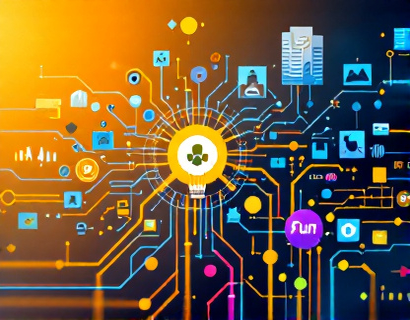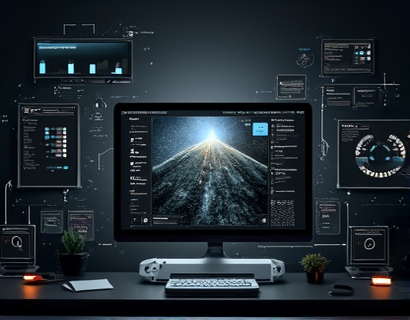Next-Gen Multi-Login Security: Simplify Digital Life with Advanced Online Authentication
In the digital age, managing multiple online accounts has become an everyday challenge. Each new service, application, or platform requires a unique set of credentials, leading to a proliferation of usernames and passwords. This not only complicates the user experience but also heightens the risk of security breaches. The need for a robust, user-friendly solution that simplifies login management while ensuring top-notch security has never been more critical. This article delves into the world of next-generation multi-login security, exploring how advanced online authentication can streamline your digital life and protect your credentials.
Traditional methods of managing multiple logins, such as writing them down or using weak password managers, are no longer viable options. They either expose you to security risks or fail to provide a seamless user experience. The solution lies in sophisticated software designed to handle the complexities of multi-account authentication securely and efficiently. These tools leverage cutting-edge technology to merge advanced security features with an intuitive interface, offering users peace of mind and convenience.
Understanding the Importance of Advanced Online Authentication
Advanced online authentication goes beyond the conventional username and password system. It incorporates multi-factor authentication (MFA), biometric verification, and behavioral analytics to create a robust security framework. MFA requires users to provide two or more verification factors to gain access, significantly reducing the risk of unauthorized access. Biometric methods, such as fingerprint or facial recognition, add an additional layer of security by leveraging unique physical characteristics. Behavioral analytics monitor user patterns to detect anomalies, further enhancing security.
The importance of these advanced methods cannot be overstated. As cyber threats evolve, traditional password-based security becomes increasingly vulnerable. According to recent studies, the majority of data breaches involve compromised or weak passwords. By adopting advanced authentication techniques, individuals and organizations can significantly mitigate these risks, ensuring that sensitive information remains protected.
Key Features of Next-Gen Login Management Software
Next-generation login management software offers a suite of features designed to enhance both security and usability. Some of the key features include:
- Centralized Credential Storage: All your login credentials are stored in a single, secure vault, eliminating the need to remember multiple passwords.
- Automatic Login: Seamlessly logs you into your favorite sites and applications, saving time and reducing the risk of manual entry errors.
- Real-Time Alerts: Receive instant notifications in case of suspicious activity or login attempts from unknown locations.
- Customizable Security Settings: Tailor the security measures to fit your specific needs, including the ability to set up different levels of access for various accounts.
- Cross-Platform Compatibility: Works across multiple devices and operating systems, ensuring a consistent experience whether you're on a desktop, tablet, or smartphone.
These features not only simplify the login process but also provide a comprehensive security solution. Centralized storage ensures that your credentials are safe and easily accessible, while automatic login reduces the likelihood of human error. Real-time alerts keep you informed and in control, and customizable settings allow for a personalized security experience.
Benefits of Using Advanced Online Authentication
The benefits of adopting advanced online authentication are manifold. For individuals, it means a significant reduction in the stress and time spent managing multiple passwords. No more forgotten passwords or the hassle of resetting them. For businesses, it translates to enhanced data protection and compliance with regulatory standards. Here are some specific advantages:
For Individuals:
- Convenience: With all credentials stored in one place, accessing your accounts is a breeze. No more toggling between different login pages.
- Security: Advanced encryption and multi-factor authentication ensure that your sensitive information is well-protected against cyber threats.
- Time-Saving: Automatic login features eliminate the need to manually enter credentials, saving valuable time.
- Peace of Mind: Real-time alerts and activity tracking give you control over your accounts, allowing you to respond quickly to any suspicious activity.
For Businesses:
- Enhanced Security: Protecting employee credentials and corporate data is paramount. Advanced authentication methods reduce the risk of breaches and unauthorized access.
- Compliance: Many industries have strict regulations regarding data security. Advanced login management solutions help ensure compliance with these standards.
- Productivity: Streamlined login processes reduce the time employees spend on authentication, allowing them to focus on their core tasks.
- Centralized Management: Administrators can manage and monitor all user access from a single dashboard, simplifying IT management.
How Next-Gen Authentication Works
Next-generation authentication systems operate through a combination of technologies and protocols. Here’s a high-level overview of how they function:
1. Credential Storage: Your login credentials are encrypted and stored in a secure vault. This vault is protected by strong encryption algorithms and access controls.
2. Multi-Factor Authentication: When you attempt to log in, the system prompts you for multiple forms of verification. This could include a password, a fingerprint scan, or a one-time code sent to your mobile device.
3. Behavioral Analytics: The system monitors your login patterns and device usage. Any deviations from the norm trigger additional verification steps or alerts.
4. Automatic Login: Once authenticated, the system remembers your preferences and logs you into your preferred applications automatically. This process is seamless and secure.
5. Real-Time Monitoring: The platform continuously monitors for any suspicious activity, such as login attempts from unfamiliar devices or locations. Users receive immediate alerts in case of potential threats.
By integrating these components, next-gen authentication provides a robust and user-friendly solution that balances security and convenience.
Choosing the Right Solution
With numerous options available in the market, selecting the right login management software can be daunting. Here are some factors to consider when making your choice:
1. Security Features: Ensure the solution offers robust security measures, including encryption, multi-factor authentication, and behavioral analytics.
2. User Interface: A user-friendly interface is crucial for adoption. Look for solutions with intuitive designs and easy navigation.
3. Compatibility: The software should work across various devices and platforms, providing a consistent experience regardless of where you access your accounts.
4. Customization Options: Consider solutions that allow you to tailor security settings to your specific needs and preferences.
5. Customer Support: Reliable customer support can be invaluable, especially when dealing with complex security issues.
By evaluating these factors, you can select a solution that not only meets your security requirements but also enhances your overall digital experience.
Future Trends in Multi-Login Security
The field of multi-login security is rapidly evolving, driven by advancements in technology and changing user expectations. Some key trends to watch include:
1. Artificial Intelligence and Machine Learning: AI and ML are being integrated into authentication systems to improve threat detection and user experience. These technologies can predict and prevent potential security threats more effectively.
2. Decentralized Identity Management: Blockchain and decentralized technologies are being explored to give users more control over their digital identities, reducing reliance on centralized authorities.
3. Biometric Advancements: As biometric technologies mature, we can expect more accurate and convenient methods of authentication, such as vein recognition and advanced facial recognition.
4. Zero-Trust Security: The zero-trust model, which assumes no user or device is inherently trustworthy, is gaining traction. This approach requires continuous verification and monitoring, enhancing overall security.
Embracing these trends can help individuals and organizations stay ahead of emerging threats and adapt to the evolving digital landscape.
Conclusion
Next-generation multi-login security solutions offer a powerful combination of advanced security and user convenience. By centralizing credential management, incorporating multi-factor authentication, and leveraging cutting-edge technologies, these tools provide a comprehensive approach to digital security. As cyber threats continue to evolve, adopting such solutions becomes not just a preference but a necessity. For those seeking to simplify their digital life while maintaining top-notch security, next-gen authentication is the way forward.










































